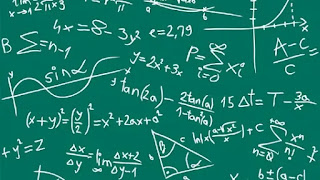Utilizing Structured Problem Solving Strategies
We have been discussing structured problem solving in mathematics classrooms. One of the core activities that helped understand the conceptualization of structured problem-solving was the growing dots problem. We were shown pictures of dots that were increasing in quantity, and we had to discover various ways to determine how to determine the number of dots in the 100th picture. Below is an attachment of everyone's work:
I was initially surprised at how many different ways there was to approach such a basic problem. As I've mentioned in my previous blogs, I have been trying to challenge myself to get out of the habit into finding an algebraic solution and investigate other ways to solve problems using my problem-solving skills. Through our gallery walk, I learned that there are graphical, logical, visual and algebraic solutions to the same problem. My favorite part of the activity was realizing that we can even use techniques such as extrapolation (which you would think is unrelated to patterning), to solve abstract problems. I really liked this portion of the lesson because it really expanded on my higher-order thinking skills, and I realized that I can use multiple techniques to help teach my class in the future. This lesson is going to give me reference to ensure that I am using multiple problem-solving strategies in my own classroom.
I also found a connection between finding a 'pattern' to the dots, just like the video by Boaler in our first lecture. It was surprising to find that the dots have an 'arm' pattern, where the dots increase by one on each 'arm' that is defined in the image. From there, we were able to develop an equation integrated with our knowledge of arithmetic sequences, making this problem much more simplistic. A potential challenge that I see with this is for very abstract problems that may stem from courses in the curriculum such as advanced functions and calculus. For example, how can we conceptualize various ways to prove a trigonometric identity? How could we make practical meaning of a problem that involves quadratic-trigonometric equations, such as (sinx)^2+4(sinx)+3=0? This will be something that I, as a future educator, need to work on to ensure that I can still differentiate instruction for various learners in the classroom.
I was also intrigued by the three-part lesson to reinforce the idea of structured problem solving. It provides students with their own space to think, solve, and then consolidate on the problem. Something I realized when discussing the three-part lesson with my group is that the reflective practices instilled in the three-part lesson will benefit the students' collaborative and problem-solving skills, and consequently make them better mathematics students in their future. As an extension to the three-part lesson, I found a visual aid online that extends on the structured problem-solving framework, and shows how structured problem-solving is a continuum that strengthens students' critical thinking skills.
Overall, it has been eye-opening to see the differences between structured problem-solving that was learned in this lecture, compared to some of the unstructured problem-solving we have seen previously. One thing I will definitely be using in the future is the three-part lesson so that students' will be able to reflect on the problems that they have solved to help them become better learners. In the future, a challenge that I realized I still need to focus on is to be open to various ways to solve problems, and I hope the next couple classes will keep helping me strengthen my critical thinking skills!
References
Bristoll, H. (2018). The Six Step Problem Solving Model. Retrieved from http://www.free-management-ebooks.com/news/six-step-problem-solving-model/
References
Bristoll, H. (2018). The Six Step Problem Solving Model. Retrieved from http://www.free-management-ebooks.com/news/six-step-problem-solving-model/





Comments
Post a Comment